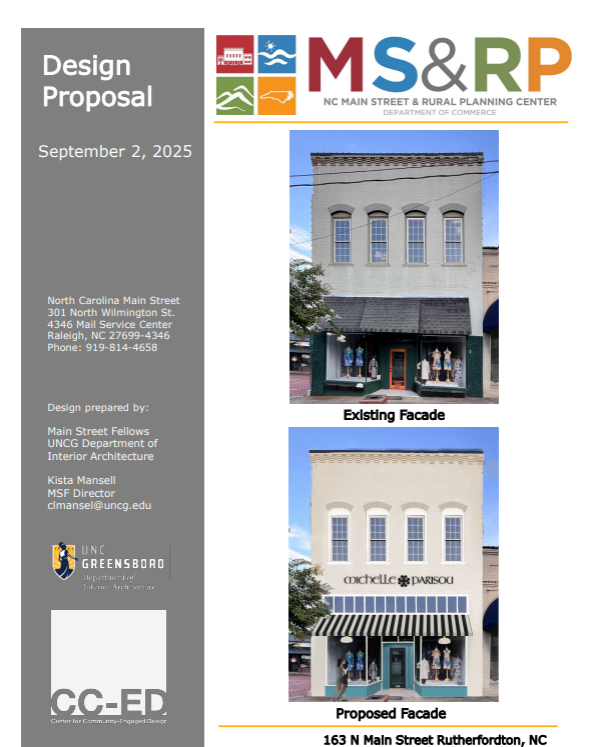NCMS Design Services
- Staff

- Sep 8
- 2 min read
Since March 2016, the North Carolina Main Street Program has partnered with UNCG’s Interior Architecture Department and Center for Community-Engaged Design to offer design assistance to designated Main Street and Small Town Main Street communities. Selected undergraduate and graduate students, known as Main Street Fellows, collaborate with faculty to develop façade rehabilitation and upper-story apartment conversion designs.
NC Main Street and Small Town Main Street may request Design Services below.
Today's Facade Design Highlight
910-912 West Avenue, Lenoir, NC
910-912 West Ave is a contributing building in the Lenoir Downtown Historic District. It’s a three-story, two-part, brick commercial building, built in 1941 as a JC Penney Department Store. The upper facade features twelve metal framed windows. The facade is constructed of stucco with fluted central and end panels. Around 1980, the upper facade windows were covered with black metal panels. A flat metal awning covers the storefront with recessed entries. The open-front design has asymmetrical and angled fronts with structural glass surrounding larger plate glass windows. The building was a JC Penney Department Store through the 1950s on the west section and Gold Shop on the east. Currently, Cork & Barrel is located on the left side, and The Banquet Shop is on the right.
A conceptual rendering for the street facade is included. The proposed enhancements include removing the existing awning, sign board framing, upper facade panels, and existing storefront; assessing the condition of and making any necessary repairs to the stucco; assessing the condition of upper facade metal windows and repairing as needed; new storefront, paint, and awning.
The design of the new storefront is based on archival photos of the facade from 1941, however, additional physical evidence may be uncovered in the field as work begins and should be taken into consideration if contrary to the proposal.
All proposed facade enhancements are intended to be consistent with the Secretary of the Interior’s Standards for Rehabilitation.



